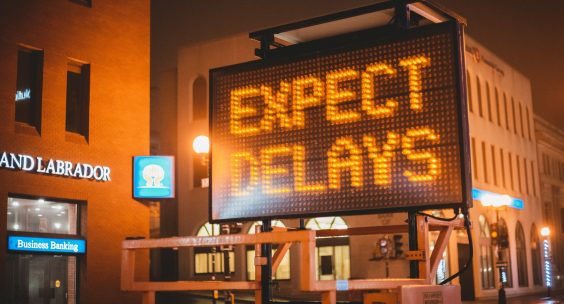City Drops Years-Long Plan for Road Diet on Eastern Cesar Chavez Street
5:32 PM PDT on June 28, 2011
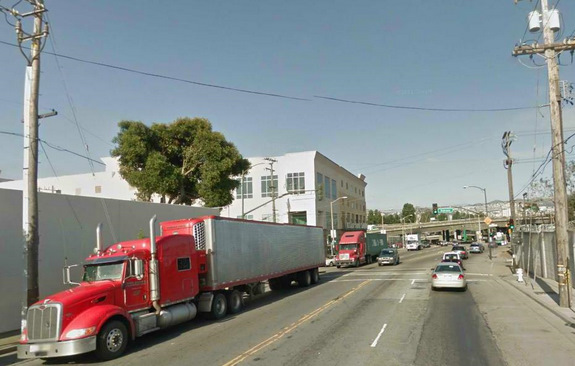
Just days before bike lanes were scheduled to be striped on eastern Cesar Chavez Street, an SFMTA staffer told a group of neighbors, advocates and others at a community meeting last night that the plan to replace one of the street's travel lanes was being scrapped. City Hall sources told Streetsblog the order came from the Mayor's Office, which was responding to last-minute concerns from industrial businesses worried about reducing road capacity for trucks.
Many frustrated attendees railed against the decision, which they argued ran afoul of an intensive community planning process that has been underway for five years. The SFMTA's James Shahamiri told the crowd that the bike lanes will have to be redesigned to keep four travel lanes and will be delayed up to 9 months.
"We got together with the Planning Department and other members of the city family and we're going to rethink our strategy for Cesar Chavez," said Shahamiri, who used this presentation [pdf] to explain the decision. "We discovered that our project wasn't being very consistent with the goals in terms of providing safe, comfortable access for bicycles and ensuring the safe convenience of all modes of travel and the industrial access and future developments."
But some attendees like Brian Coyne felt blindsided by the announcement. "Trucking and industry are absolutely legitimate interests," he said, "but it seems, in this process, as if those interests have been given a veto...instead of bargaining all the other interests."
"My impression was we had decided that our compromise on Cesar Chavez was going to be to take away a lane and to add bicycle lanes, and it's now very disappointing to find out days before the lanes are supposed to go on the ground that we have to fight that battle all over again," Coyne said.
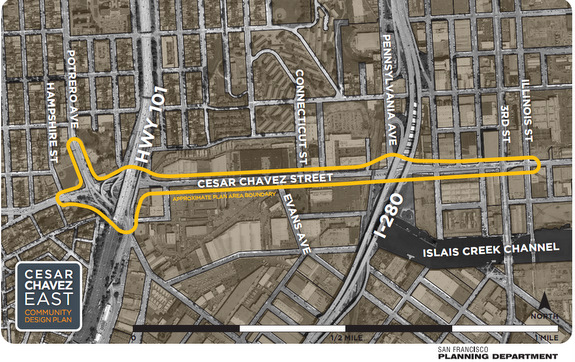
The road diet was included in the SF Bike Plan, developed in meetings with stakeholders over the years, and approved by the SFMTA Board of Directors on June 26, 2009. A majority of neighbors who took part in the meetings agreed that the bike lanes would best be allocated from one of the street's two existing eastbound travel lanes, which could have the effect of calming motor traffic on the dangerous corridor. It would have also provided an opportunity to widen sidewalks, and fill in gaps where sidewalks don't exist.
"This has been a long process," said Fran Taylor of CC Puede. "We came up with an option that people liked better than keeping the four lanes of trucks, which seems to be about to be shoved down our throats tonight."
Walk SF Executive Director Elizabeth Stampe said the decision was "baffling and very troubling."
The Planning Department hosted a walking tour of Eastern Cesar Chavez.
Staff from the SFMTA, the Planning Department, the Mayor's Office, and the Port of San Francisco said the decision was reached after the agencies began communicating better with one another about their plans for the area and decided the fourth lane was needed.
"They were going to stripe that lane and there was a question of do we need to do this now or can we take this through a longer process," said Wells M. Lawson, the assistant project manager for joint development for the Mayor's Office.
"With 30 percent of the city's growth happening in the southeast sector, Cesar Chavez is a significant conduit for transportation down into that section of the waterfront," explained David Beaupre of the Port of San Francisco.
Representatives from some industrial businesses who use Cesar Chavez, an official truck route, were concerned about increased congestion and came to the SFMTA to protest the plan several weeks ago with the support of the Mayor's Office.
"I didn't have any knowledge until a week or two ago that they were going to close a lane on Cesar Chavez," said Dan Boardman of Bode Gravel Company. "I don't have a strong excuse for being better informed, but the fact is I didn't understand...that it would close a lane on a major thoroughfare."
But Stampe pointed out that the planned bike lane reconfiguration would have been "an excellent opportunity to pilot a road diet and see if the claims about congestion are true because this is a short-term re-painting process."
Redesigned bike lanes could still go in within 6 to 9 months from now, said Shahamari, and the process could actually result in safer facilities than the ones originally planned. In the meantime, the community process for the Cesar Chavez East Community Design Plan will go on, and planners will come back in several weeks with some proposed designs.
"The project as it was designed to be implemented this month put bicycles between parking and a lot of truck activity," said Shahamiri. "Ultimately, that's not a solid design. That doesn't meet the goal of providing a safe and effective bicycle facility."
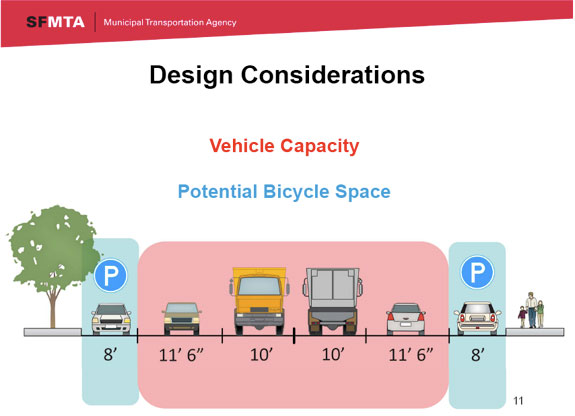
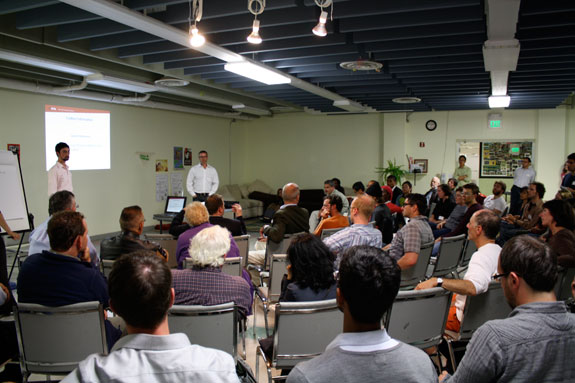
The only option left for installing a protective bike lane would be to remove parking, something Shahamiri said SFMTA staff would study.
"We're very much interested in ensuring that the bike facilities promised when they were approved in 2009 move forward," said Kit Hodge, the deputy director of the San Francisco Bicycle Coalition. "Whether those evolve into an improved bicycle facility, such as a continuous separated bikeway, or some other type of improvement remains to be seen, but we're very interested in seeing another street safety project move forward."
A safe bicycle facility would connect a major gap in the existing bike network and provide a vital alternative for residents and employees who drive on Cesar Chavez to reduce vehicular travel demand.
"Not all the traffic is trucks, there's a lot of car traffic, too," said Taylor. "We've been trying, banging our heads for years, to get Muni service (on Cesar Chavez). There are hundreds of workers out there who have no alternative but to drive."
"We want the trucks, we want the industrial uses. But we do not want to sacrifice the pedestrians and the bicyclists to keep the Mayor happy," she said.
Fears of vehicle congestion are one reason why projects like the freeway interchange known as the "Hairball" have been built, she noted, which currently divides neighborhoods and inundates Cesar Chavez with car traffic. In the planning meetings, the Hairball has been identified as one of the primary targets for improvement by neighbors because it causes blight and danger in the neighborhood.
"We hear this every time we bring up reconfiguring a street," said Taylor. "And that's how we got in this fix in the first place. Everybody gasped when they looked at that huge-ass freeway and we thought, 'how could we think of building this through our city?'"
"Well, it's the same mentality. We need to look at the alternatives to that and not just fall for that, 'oh, we need more space.' Well, let's make it six lanes, then!"
Streetsblog Editor Bryan Goebel contributed reporting.
Stay in touch
Sign up for our free newsletter
